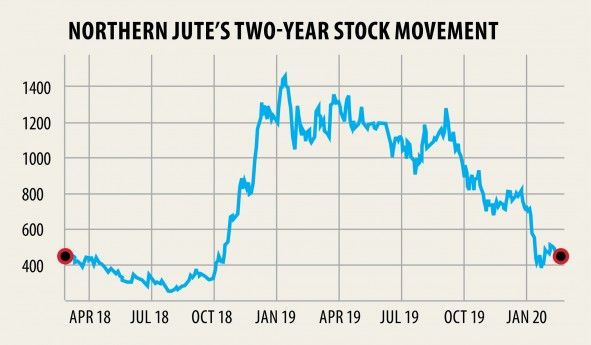Contents:


Companies also must hold enough liquid assets to cover their short-term obligations like bills or payroll; otherwise, they could face a liquidity crisis, which could lead to bankruptcy. When an otherwise solvent business does not have the liquid assets—in cash or other highly marketable assets—necessary to meet its short-term obligations it faces a liquidity problem. Obligations can include repaying loans, paying its ongoing operational bills, and paying its employees. Unfortunately, the company only has $3,000 of cash on hand and no liquid assets to quickly sell for cash. Now if the company had $10,000 in cash and other liquid assets worth $15,000 that it could sell in a few days for cash, it would be able to meet its debt obligations for many months to come, hopefully until the economy rebounds. A liquidity crisis occurs when a company or financial institution experiences a shortage of cash or liquid assets to meet its financial obligations.
These models assert that international factors can play a particularly important role in increasing domestic financial vulnerability and likelihood of a liquidity crisis. In the example above, the rare book collector’s assets are relatively illiquid and would probably not be worth their full value of $1,000 in a pinch. In investment terms, assessing accounting liquidity means comparing liquid assets to current liabilities, or financial obligations that come due within one year.
As a result, the ratio of debt to tangible assets—calculated as ($50/$55)—is 0.91, which means that over 90% of tangible assets (plant, equipment, and inventories, etc.) have been financed by borrowing. To summarize, Liquids, Inc. has a comfortable liquidity position, but it has a dangerously high degree of leverage. The above-mentioned forces mutually reinforce each other during a liquidity crisis. Market participants in need of cash find it hard to locate potential trading partners to sell their assets. This may result either due to limited market participation or because of a decrease in cash held by financial market participants.
Learn How NetSuite Can Streamline Your Business
An economic depression is a steep and sustained drop in economic activity featuring high unemployment and negative GDP growth. The Nikkei 225, the main stock index in Japan, fell from a peak of over 38,000 in December 1989, and in early 2023 remains well below that peak. The index did hit a multi-year high above 29,000 in August 2022 before falling to around 27,500 just a month later. Government projects can fuel job growth and spending when companies hold back.
Fed Raises Rates, but Uncertainty Reigns Amid Banking Crisis – Morningstar
Fed Raises Rates, but Uncertainty Reigns Amid Banking Crisis.
Posted: Wed, 22 Mar 2023 07:00:00 GMT [source]
Even with healthy sales, if your company doesn’t have cash to operate, it will struggle to be successful. But looking at your company’s cash position is more complicated than just glancing at your bank account. Liquidity is a measure companies uses to examine their ability to cover short-term financial obligations.
Solvency Ratios vs. Liquidity Ratios: An Overview
Falling interest rates could nicely promote new loan demand and improve supply but only in a deflationary spiral of additional falls in anticipated capital returns and the perceived want for nonetheless lower cash rates of interest. If Gesell is right, it’s important to tax cash itself which implies not just retail deposits however cash in circulation. A liquidity trap occurs when people don’t spend or invest even when interest rates are low.
Banks and investors look at liquidity when deciding whether to loan or invest money in a business. A solvency ratio is a key metric used to measure an enterprise’s ability to meet its debt and other obligations. Risk factors warrant attention such as downward any revision to forecasts for the world economy and financial market fluctuations as Western countries continue to tighten monetary policy, he added. Followers of Ludwig Von Mises, an influential 20th-century Austrian economist who was an advocate of free-market capitalism and a staunch opponent of socialism and interventionism, do not believe in the existence of liquidity traps. In contrast, for John Maynard Keynes the potential of a liquidity lure arises from a sharp rise in traders’ liquidity desire and the concern of capital losses as a result of uncertainty about the direction of interest rates.
One of the earliest and most influential models of liquidity crisis and bank runs was given by Diamond and Dybvig in 1983. The Diamond–Dybvig model demonstrates how financial intermediation by banks, performed by accepting assets that are inherently illiquid and offering liabilities which are much more liquid , can make banks vulnerable to a bank run. This gives rise to self-fulfilling panics among depositors, as we observe withdrawals by even those depositors who would have actually preferred to leave their deposits in, if they were not concerned about the bank failing.
Free Accounting Courses
What’s evident is that central banks and governments are trying to temper any deflationary environment and bitcoin’s shining moment may emerge. The stock market, on the other hand, is characterized by higher market liquidity. If an exchange has a high volume of trade that is not dominated by selling, the price that a buyer offers per share and the price that the seller is willing to accept will be fairly close to each other. Current, quick, and cash ratios are most commonly used to measure liquidity. A company’s liquidity can be a key factor in deciding whether to invest in its stock or buy its corporate bonds. Accounting liquidity refers to the amount of ready money a company has on hand; investors use it to gauge a firm’s financial health.
Lucid Group Stock: Why It’s Time To Sell (NASDAQ:LCID) – Seeking Alpha
Lucid Group Stock: Why It’s Time To Sell (NASDAQ:LCID).
Posted: Tue, 02 May 2023 14:23:54 GMT [source]
Liquidity crises can be triggered by large, negative economic shocks or by normal cyclical changes in the economy. Learn accounting fundamentals and how to read financial statements with CFI’s free online accounting classes. The value of shares and ETFs bought through a share dealing account can fall as well as rise, which could mean getting back less than you originally put in. Liquidity crises can be caused by a variety of factors, including poor management decisions, a sudden loss of investor confidence, or an unexpected economic shock.
The Federal Reserve Bank of Chicago’s analysis of the financial health indicators of small businesses demonstrated a need for caution in placing too much stock in revenue growth as an indicator of financial health. This shows the company’s capacity to pay off short-term debt with cash and cash equivalents, the most liquid assets. When defined strictly, a liquidity trap renders central bank policies ineffective. However, research by economists at the Bank for International Settlements suggests that alternative monetary policy tools like quantitative easing and negative interest rates can be effective when less drastic measures fail. By definition, a liquidity trap exists only during a period of very low interest rates.
The liquidity crunch meaning-adjusted CAPM pricing model therefore states that, the higher an asset’s market-liquidity risk, the higher its required return. Diamond and Dybvig demonstrate that when banks provide pure demand deposit contracts, we can actually have multiple equilibria. If confidence is maintained, such contracts can actually improve on the competitive market outcome and provide better risk sharing. In such an equilibrium, a depositor will only withdraw when it is appropriate for him to do so under optimal risk-sharing. However, if agents panic, their incentives are distorted and in such an equilibrium, all depositors withdraw their deposits.
You should consider whether you understand how CFDs work and whether you can afford to take the high risk of losing your money. CFDs are complex instruments and come with a high risk of losing money rapidly due to leverage. A low or narrow bid-ask spread is said to be tight and tends to reflect a more liquid market.
Assets that can be readily sold, like stocks and bonds, are also considered to be liquid . Businesses need enough liquidity on hand to cover their bills and obligations so that they can pay vendors, keep up with payroll, and keep their operations going day-in and day out. Alternatively, external analysis involves comparing the liquidity ratios of one company to another or an entire industry.

That may be fine if the person can wait for months or years to make the purchase, but it could present a problem if the person only had a few days. They may have to sell the books at a discount, instead of waiting for a buyer who was willing to pay the full value. Adam Hayes, Ph.D., CFA, is a financial writer with 15+ years Wall Street experience as a derivatives trader. Besides his extensive derivative trading expertise, Adam is an expert in economics and behavioral finance.
Likewise, all other sectors which are experiencing a period of subdued consumer demand have been affected largely by the liquidity crisis. The model also provides a suitable framework for analysis of devices that can be used to contain and even prevent a liquidity crisis . Note that the underlying reason for withdrawals by depositors in the Diamond–Dybvig model is a shift in expectations. Alternatively, a bank run may occur because bank’s assets, which are liquid but risky, no longer cover the nominally fixed liability , and depositors therefore withdraw quickly to minimize their potential losses.
Another leverage measure, the debt-to-assets ratio measures the percentage of a company’s assets that have been financed with debt (short-term and long-term). A higher ratio indicates a greater degree of leverage, and consequently, financial risk. Solvency refers to an enterprise’s capacity to meet its long-term financial commitments. Liquidity refers to an enterprise’s ability to pay short-term obligations—the term also refers to a company’s capability to sell assets quickly to raise cash. “I expect the BOJ to guide monetary policy flexibly, meaning that the central bank should do so appropriately taking economy and financial markets into account.”
However, as seen within the Eurozone, over-extending a zero interest rate coverage also can lead to unfavorable interest rates. Thus, many economists have challenged the value of zero interest rate insurance policies, pointing to liquidity traps amongst several other pitfalls. Another approach to break out of the liquidity entice is to “re-inflate” the economic system by rising the actual supply of money versus focusing on nominal rates of interest. This is just a deflation spiral, shoppers delaying purchases of goods, hoarding money, anticipating further falls in items costs before they are keen to part with their cash. Japan has skilled stagnation, deflation, and low rates of interest for many years.
This is compounded by the fact that, with interest rates already approaching zero, there is little room for additional incentives to attract well-qualified candidates. Quantitative easing is an try to increase the cash balances of banks and companies. Here the Monetary authorities create cash to buy belongings such as government bonds. Buying bonds from financial institutions give the banks an increase of their financial institution balances and lowers the bond yields. Quantitative easing increases themoney supplyby buying property with newly-created bank reserves in order to provide banks with extra liquidity.
- Unlimited amounts of debt secured by assets of non-guarantor subsidiaries.
- Thus asset holders may be forced to sell their assets at a price below the long term fundamental price.
- Dollar still enjoys an unparalleled safe haven status globally and USD-based stablecoins are an extension of that status.
- Although several details of the program have yet to be specified, we are concerned that their benefits for leveraged companies may fall short on several fronts.
But that equity is not very liquid because it would be difficult to convert it to cash to cover an unexpected and urgent expense. On the other hand, inventory that you expect to sell in the near future would be considered a liquid asset. Though it’s still not as liquid as cash because although you may expect to sell your stock, unexpected circumstances might come up and stop that from happening. Solvency and liquidity are equally important, and healthy companies are both solvent and possess adequate liquidity.

A credit crunch refers to a decline in lending activity by financial institutions brought on by a sudden shortage of funds. Often an extension of a recession, a credit crunch makes it nearly impossible for companies to borrow because lenders are scared of bankruptcies or defaults, resulting in higher rates. A liquidity trap is when monetary policy becomes ineffective due to very low interest rates combined with consumers who prefer to save rather than invest in higher-yielding bonds or other investments. Between 1995 and 2007, the Japanese gross domestic product fell from $5.forty five trillion to $4.52 trillion in nominal terms, regardless of the Bank of Japan’s efforts. To execute quantitative easing, central banks improve the availability of money by buying government bonds and other securities.
Businesses and consumers pay higher loan interest rates more difficult to obtain during a liquidity crunch , . On the opposite hand, if it actually increases the money supply, there is a danger of inflation. ZIRP is a method of stimulating growth while keeping rates of interest near zero.
Adam received his master’s in economics from The New School for Social Research and his Ph.D. from the University of Wisconsin-Madison in sociology. He is a CFA charterholder as well as holding FINRA Series 7, 55 & 63 licenses. He currently researches and teaches economic sociology and the social studies of finance at the Hebrew University in Jerusalem.
The CAPM imparts that if an asset has a high market liquidity risk then it should also have a higher required return. Certain economists believe that financial liberalisation and increased amounts of foreign capital are to blame, at least in the short term, for the aggravated illiquidity and increased vulnerability in banks. Funding or cash flow liquidity risk is the chief concern of a corporate treasurer who asks whether the firm can fund its liabilities. A classic indicator of funding liquidity risk is the current ratio (current assets/current liabilities) or, for that matter, the quick ratio. Market liquidity and accounting liquidity are two main classifications of liquidity, and financial analysts use various ratios, such as the current ratio, quick ratio, acid-test ratio, and cash ratio, to measure it. Having liquidity is important for individuals and firms to pay off their short-term debts and obligations and avoid a liquidity crisis.
Although solvency does not relate directly to liquidity, liquidity ratios present a preliminary expectation regarding a company’s solvency. A BIS working paper aptly titled “Does the Liquidity Trap Exist?” showed that in the U.S., Japan, and the Eurozone, liquidity traps were easily managed through such alternative measures. The paper argues that “In such a view, the central bank’s inability to lower the short-term interest rate is irrelevant, provided that it can ramp up credit supply and if at least some non-financial economic agents are credit-constrained.” The effect, Keynes said, is to leave monetary policymakers powerless to stimulate growth by increasing the money supply or lowering the interest rate further. According to Friedman, a central financial institution can increase the financial base even when the interest rate vanishes; it solely must continue shopping for bonds. Therefore, the proper monetary coverage throughout a liquidity trap is not to additional increase money supply or cut back the rate of interest however to lift inflation expectations by raising the nominal rate of interest.
Recent Comments